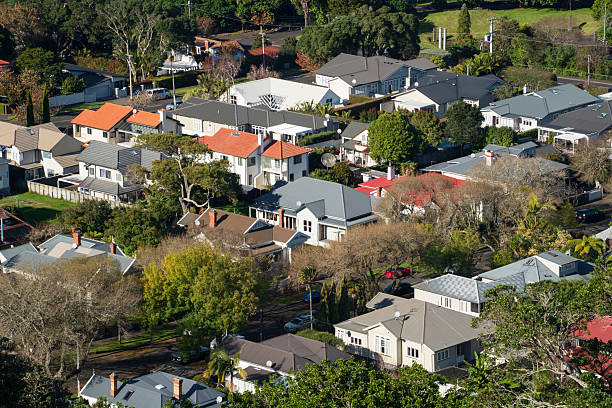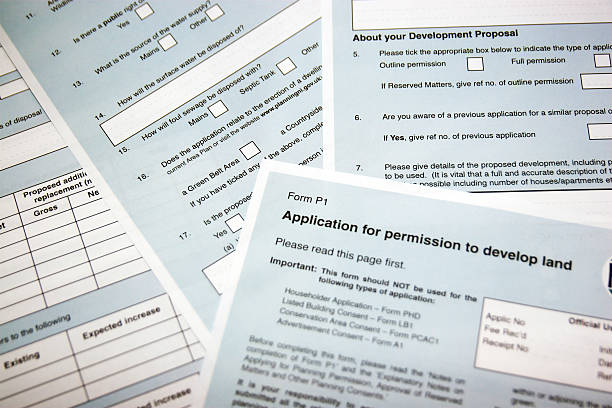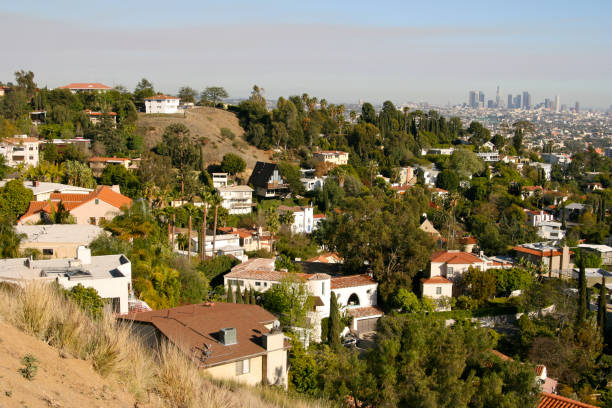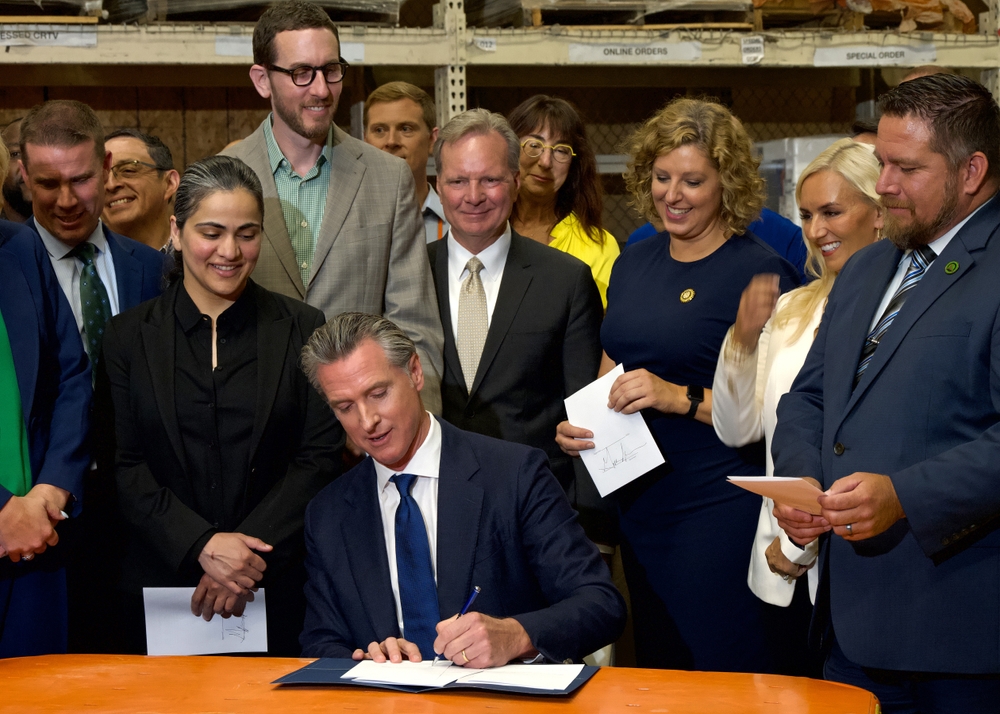When Los Angeles introduced Executive Directive 1 (ED1), many developers felt hopeful. It promised a faster, simpler path for affordable housing approvals.
Table of Contents
ToggleBut soon after, Jake Heller, owner and lead consultant at JDJ Consulting Group, noticed a common issue. Clients came in with stalled or rejected ED1 applications. Most didn’t know who could legally file them or what paperwork the city required.
After working on dozens of projects — from small infill apartments in Koreatown to large supportive housing in South LA — Jake learned that the process isn’t complicated, but it demands accuracy and coordination.
In this blog, Jake shares what his team has learned: who can file ED1 applications, which documents are needed, how long the process takes, and why professional help often saves time.
If you’re a developer, property owner, or architect, this guide will help you understand how to file your ED1 project correctly — and keep it moving toward approval without delays.

What is ED1 and why it matters in Los Angeles
ED1 stands for Executive Directive 1. It’s a policy from the City of Los Angeles that aims to streamline approvals for eligible affordable housing and shelter projects. The idea is to reduce the time, costs, and bureaucratic delays that often derail development. (Los Angeles City Planning)
A few key features:
- Projects that meet ED1 criteria can skip many discretionary reviews.
- ED1 allows ministerial review, meaning decisions are made on objective standards rather than subjective judgments.
- The city tries to issue ED1 approvals quickly: for example, ministerial decisions within 60 days after the application is “deemed complete.”
- If a project loses eligibility midway (e.g. violates affordability rules), it may lose its streamlined status. (housing.lacity.gov)
In short: ED1 is a faster, more predictable path — but only for projects that satisfy strict rules.
Who ED1 is designed to help
ED1 is not meant for every development project. Its benefits go to a particular set. Here’s a quick breakdown:
| Type of Project | ED1 Eligible? | Notes |
|---|---|---|
| 100% affordable rental housing | Yes | Must have all units deed-restricted to low, very low, or mixture (max 20% at 120% AMI) |
| Shelter or emergency housing | Yes | Shelters meeting the city’s definitions qualify under ED1 for expedited review |
| Mixed-income or market-rate units | No | ED1 excludes projects with market-rate units beyond what’s allowed under mixed income rules |
| Projects needing zone changes or major variances | No | Legislative actions, deviations, or discretionary approvals disqualify ED1 use |
So ED1 is not “for all housing.” It is for projects that are deeply affordable, aligned with zoning, and able to pass eligibility checks.
Who is allowed to file an ED1 application
This is where things get practical. Just because a project is eligible doesn’t mean every party can file the permit. Let’s look at who legally can file, and who usually does.
Legally authorized ED1 filers
Below is a list of common parties that may legally submit an ED1 application, or its required documents:
- Property owner (or ownership entity). The ED1 process requires an owner declaration of project eligibility.
- Authorized agent (architect, attorney, planning consultant, or permit expeditor) working on behalf of the owner. The agent must have proper authorization.
- Nonprofit sponsors / developers (if they control or manage the property) can file, as long as they present ownership evidence or agent authorization.
- City departments or referrals, in limited cases, when projects are started via city-initiated or public land usage.
In short: the filer must either be the owner (directly or via entity) or someone formally authorized.
Who actually files ED1 in practice
While the “official” list is short, real life is more layered. In most cases, these parties are involved, and one is selected to lead the filing:
- Developers or project sponsors often initiate the ED1 path. They assess eligibility, coordinate consultants, and decide who files.
- Architects / engineers often prepare plans and may interface with city departments, but they usually don’t file by themselves unless authorized.
- Permit expeditors / land use consultants typically lead the filing. Their role is to assemble the packet, submit to City Planning, and follow up with LADBS or LAHD.
- Attorneys sometimes file certain legal documents (like owner declarations or land use covenants) but generally as part of a broader team.
In many cases, one team member (often the permit expeditor) becomes the “point person” who ensures the application goes forward smoothly. Clients often ask: Which role should I assign? A good approach is to let the consultant or expeditor file, with the owner’s signature where needed. That helps maintain clarity and accountability.

Step-by-step: How ED1 filing works in Los Angeles
Once a project qualifies and the filer is identified, the next step is assembling and submitting the ED1 packet. This is where things can get technical. But the process becomes manageable once you know the order and what each step requires.
Step 1: Pre-check and eligibility confirmation
Before filling any forms, the team should confirm:
- The project site is zoned for residential or mixed-use development.
- The entire project is 100 % deed-restricted affordable or an approved shelter.
- The owner or applicant can legally commit the property for those uses.
- The plans comply with ED1 standards — including height, setbacks, and parking limits.
Consultants often handle this stage to avoid surprises later. It’s also where City Planning or LADBS staff may informally flag issues.
Step 2: Assembling the ED1 application packet
Every application must be organized properly. Missing one document can delay acceptance. Below is a table summarizing what the City of Los Angeles typically requires for an ED1 intake.
| Document / Item | Purpose | Filed By |
|---|---|---|
| ED1 Intake Form (Planning) | Official record of application and filer details | Architect, consultant, or owner |
| Project Description Letter | Outlines scope, unit mix, and affordability | Developer or consultant |
| Owner Declaration of Eligibility | Confirms ownership consent and affordability commitment | Property owner |
| Deed Restriction / Covenant Draft | Proof of affordability term (e.g., 55 years) | Attorney or LAHD staff |
| Project Plans (Site, Floor, Elevation) | For review and verification | Architect |
| LAHD Proof of Affordability (if applicable) | Verification from Housing Department | Developer or consultant |
| Utility Letters / Preliminary Reports | Optional, helps avoid future plan corrections | Engineer or expeditor |
Tip: Keep all files in one PDF if possible and name them clearly — “ED1_[ProjectName]_Plans.pdf.” It helps city reviewers process faster.
Step 3: Filing and departmental coordination
Once the packet is complete, it’s filed electronically with Los Angeles City Planning. The application then routes to other departments, like:
- LADBS (Building & Safety) – for plan check coordination
- LAHD (Housing Department) – for affordability verification
- Public Works – for street or utility conditions, if applicable
- Fire Department – for access and safety clearance
Each department reviews its portion and issues clearances. Consultants often track these steps daily, since coordination is what keeps projects moving.
Step 4: Review, corrections, and approval
If the packet meets all requirements, Planning will deem the application “complete.” The city aims to issue a ministerial approval letter within 60 days.
If corrections are needed, they’re sent back via the same portal. Timely responses make a big difference — delays often come from missing or outdated documents.
The applicant’s paperwork: required forms and templates
Here’s where ED1 filing gets very document-heavy. Even if your team is experienced, some forms are unique to this program. To keep things clear, the next table lists all must-have forms and optional add-ons that make review smoother.
Mandatory ED1 Forms (2025 Edition)
| Form Name | Where to Get It | Who Signs / Submits |
|---|---|---|
| ED1 Ministerial Approval Application (CP-4080) | planning.lacity.gov | Architect or consultant |
| ED1 Owner Declaration Form | housing.lacity.gov | Property owner |
| Deed Restriction / Affordability Covenant | Provided by LAHD | Owner + LAHD officer |
| Plan Set (with zoning data, height, setbacks) | Prepared by project architect | Architect |
| Project Summary Table | Included in the ED1 filing packet | Consultant |
Recommended Supporting Documents
| Document | Why It Helps |
|---|---|
| Title Report or Grant Deed | Confirms ownership and avoids filing errors |
| Funding Commitment Letter | Shows financial readiness and credibility |
| Utility and Access Letters | Prevents future LADBS delays |
| Early Plan Check Results | Helps confirm zoning consistency |
| Consultant Filing Authorization | Required when a third-party expeditor files |
Most applicants underestimate how vital these attachments are. Even if not mandatory, they can save weeks of back-and-forth with staff reviewers.
When the owner must sign: declarations and consent
The property owner is a key part of the process. ED1 requires a signed Owner Declaration of Project Eligibility, confirming the project will meet affordability terms for its entire compliance period (often 55 years).
Here’s what that means in plain terms:
- The owner gives consent for the property to be used for 100 % affordable or shelter purposes.
- The owner confirms that the applicant or agent filing the ED1 packet is authorized.
- The declaration is recorded with LAHD, linking the property to its affordability covenant.
If the owner is a company, the signatory must be an authorized corporate officer or managing member. Missing this document is one of the most common reasons ED1 filings are rejected.
Common Ownership Scenarios
| Scenario | Who Signs the Declaration |
|---|---|
| Single property owner | Owner signs directly |
| LLC / Corporation owns property | Authorized officer or manager |
| Property held in trust | Trustee |
| Developer filing as option-holder | Property owner + developer co-sign |
In many projects, especially where ownership and development teams differ, consultants prepare the owner declaration and send it for signature before submission. This simple step prevents costly “incomplete” notices.
Quick tip for smoother review
Even when a project meets all ED1 rules, approvals can still slow down due to inconsistent file naming or mismatched data. To avoid this, consultants often prepare a cross-check table before submission:
| Item | Checklist |
|---|---|
| Unit count matches across all forms | Yes |
| Parcel APN consistent on plans and declaration | Yes |
| Owner’s legal name matches title report | Yes |
| Deed restriction language matches affordability plan | Yes |
| Contact info identical across forms | Yes |
Small details like these often decide whether your application sails through or stalls for weeks.
Common mistakes in ED1 submittals (and how to avoid them)
Even experienced applicants make errors that can delay approvals. Here are a few recurring problems JDJ Consulting Group helps clients avoid:
1. Submitting incomplete plan sets
City reviewers expect all architectural sheets in one digital package. Missing pages cause restarts.
2. Not proving full affordability
ED1 applies only to 100% affordable projects. Including even one market-rate unit disqualifies the application.
3. Wrong project zoning assumptions
Some applicants don’t verify zoning or overlay restrictions before filing. Always confirm the parcel’s zoning and fire-risk tier.
4. Ignoring inter-department coordination
ED1 involves multiple departments. Applicants must track updates across Planning, Building & Safety, and Housing — not just one.
5. Poor document naming conventions
Incorrect file names can cause uploads to fail or get lost in review systems.
Working with a consultant helps prevent these issues — ensuring your project stays on track for priority review and approval.

How long does ED1 processing take in Los Angeles
Standard timelines under Executive Directive 1
One of the main goals of Executive Directive 1 (ED1) is to cut down review time for 100% affordable housing projects. Instead of the usual 6–12 months for entitlement or plan check reviews, ED1 aims for a streamlined 60–90 day review period for qualifying projects.
However, this timeline varies depending on:
- Project size and number of units
- Completeness of your initial submittal
- Whether additional discretionary actions are required
- Coordination between City Planning, Housing, and Building & Safety
A clean, fully eligible project can move faster — while incomplete submittals may lose priority and face normal review delays.
Typical processing breakdown
Here’s a general idea of what a standard ED1 application timeline looks like when managed by an experienced consultant:
| Stage | Average Duration | Department Involved |
|---|---|---|
| Pre-Application Consultation | 1–2 weeks | Planning or Consultant |
| Intake and Eligibility Review | 2–3 weeks | LA City Planning |
| Departmental Routing | 2 weeks | LADBS, Housing, and Fire Dept. |
| Corrections & Resubmittal | 2–4 weeks | Applicant / Consultant |
| Final Review & Approval | 1–2 weeks | City Planning & Housing Dept. |
With good preparation, many projects under ED1 reach approval within 70–90 days, which is much faster than traditional processing routes.
How consultants simplify the ED1 review process
Managing documentation and communication
ED1 applications often move between multiple city departments — and that’s where consultants like JDJ Consulting Group make the biggest difference. They ensure nothing slips through the cracks.
Here’s how a professional consultant supports your project:
- Organizes all plan sets, studies, and forms in city-accepted formats
- Tracks submittal status across multiple departments
- Manages resubmittals and city corrections efficiently
- Coordinates with architects and engineers for technical updates
- Keeps communication professional, documented, and timely
A consultant acts as your single point of contact, saving you from confusion between overlapping city requirements.
Reducing review delays
Even though ED1 provides fast-track eligibility, your approval still depends on document accuracy and responsiveness.
Consultants help cut delays by:
- Checking project zoning before submittal
- Ensuring full affordability documentation is attached
- Scheduling early meetings with Planning staff
- Preparing parallel submittals (e.g., CEQA and Housing forms)
In short, they prepare your file like it’s going into review tomorrow — not weeks later.
How to know if your project qualifies for ED1
Not every affordable housing project in Los Angeles qualifies under ED1. To meet the criteria, your project must satisfy several conditions that the city has clearly defined.
Key ED1 qualification points:
- The project must include 100% affordable units (except for an on-site manager’s unit).
- The property must be located within the City of Los Angeles (not unincorporated LA County).
- It must comply with basic zoning, safety, and design standards.
- The developer must agree to record an affordability covenant.
- The project cannot rely on density bonus or other discretionary entitlements unless allowed by ED1.
If your project meets these points, a consultant can help confirm your eligibility and prepare the right documentation before filing.
ED1 application checklist for developers and property owners
Before you file your ED1 application, it helps to review everything once more. Here’s a quick step-by-step checklist that JDJ Consulting Group uses when preparing an ED1 submittal package.
Pre-filing preparation
- Confirm project site zoning and fire-risk area status
- Determine eligibility under 100% affordable housing requirements
- Schedule a consultation with your architect and planning consultant
- Prepare an updated set of site and floor plans
- Review CEQA status (exempt or categorical exemption)
Core documents
- Completed ED1 Application Intake Form
- Owner authorization letter or consent form
- Architectural plans (site, floor, elevations, and sections)
- Affordability covenant draft or sample
- Preliminary title report
- Housing Department and Planning checklists
Optional attachments that strengthen your application
- Shadow/massing diagrams
- Parking study or waiver justification
- Landscape plan (if available)
- Utility will-serve letters
- Environmental site assessment (Phase I)
These steps don’t just check boxes — they create a smoother approval path and help city reviewers trust your submission’s accuracy from day one.

When to involve JDJ Consulting Group
Early consultation pays off
The best time to bring in JDJ Consulting Group is before you file your ED1 application. An early consultation helps you confirm eligibility, prepare documentation, and anticipate which departments will review your project.
Many developers contact JDJ only after hitting snags in plan check — but early involvement can save weeks or even months. Our team helps refine project design, coordinate with city staff, and guide your project to meet all ED1 conditions before submittal.
JDJ’s expertise with ED1 projects
JDJ Consulting Group has helped Los Angeles developers, architects, and property owners move dozens of ED1 projects through the city’s fast-track system. We don’t just handle paperwork — we handle strategy.
Our expertise includes:
- Reviewing entitlement and zoning pathways
- Coordinating with city planning reviewers
- Preparing fully compliant ED1 packages
- Responding to corrections and revisions
- Managing environmental and design compliance
We help transform eligible affordable housing ideas into approved, build-ready projects.
Why professional guidance matters for ED1 projects
Even though ED1 aims to simplify affordable housing approvals, the process still involves multiple agencies, zoning conditions, and document standards. A single missing form or incorrect zoning assumption can derail your application.
Professional consultants ensure:
- Submittals meet all checklist requirements
- Documents are formatted correctly for city systems
- Review comments are addressed fast and accurately
- Projects stay compliant with affordability and CEQA rules
That’s why working with JDJ Consulting Group means fewer delays, clearer communication, and stronger approvals.
Ready to file your ED1 application? Let’s simplify the process.
- Only qualified developers, owners, architects, and consultants can file ED1 applications.
- Complete and accurate documentation is crucial for priority review.
- Most projects reach approval within 60–90 days when properly prepared.
- Consultants like JDJ simplify communication and prevent costly errors.
- Early consultation saves time, reduces risk, and accelerates approvals.
Reach out to our consulting firm for ED1 application at:
12925 Riverside Dr Suite 302, Sherman Oaks, CA 91423, United States

FAQs: Who Files ED1 Applications in Los Angeles
What is an ED1 Application in Los Angeles and why is it important?
An ED1 application allows qualified developers to fast-track approvals for 100% affordable housing. It brings multiple city departments together — like Planning, Housing, and Building & Safety — for a coordinated review. The main goal is to speed up affordable housing production while maintaining design and safety standards.
Who Files ED1 Applications in Los Angeles?
Typically, ED1 applications can be filed by:
Property owners or authorized representatives
Licensed architects and engineers
Affordable housing developers (both nonprofit and private)
Experienced planning or permit consultants
Applicants must prove ownership or obtain written authorization before filing the application.
Do I Need a Consultant to File an ED1 Application in Los Angeles?
Hiring a consultant isn’t mandatory — but it makes a big difference. Professionals like JDJ Consulting Group help:
Verify eligibility before filing
Prepare a complete submittal package
Coordinate with City Planning and Housing departments
Without expert oversight, errors or missing documents can delay the approval process.
What Projects Qualify for Executive Directive 1 (ED1) in Los Angeles?
A project qualifies for ED1 in Los Angeles if it:
Includes 100% affordable housing (except for an on-site manager’s unit)
Is located within the City of Los Angeles
Meets the city’s zoning and height regulations
Records a long-term affordability covenant
Projects with any market-rate units are not eligible for ED1’s fast-track processing.
How Long Does an ED1 Application Take to Process in Los Angeles?
Processing time for ED1 applications averages 60 to 90 days, depending on project complexity and documentation accuracy. Here’s the typical timeline:
Pre-consultation: 1–2 weeks
Intake and eligibility review: 2–3 weeks
Departmental routing and corrections: 4–6 weeks With a complete submittal, some projects move faster than the standard schedule.
Which Los Angeles Departments Review an ED1 Application?
An ED1 application in Los Angeles passes through several agencies, including:
City Planning Department – site and zoning review
Housing Department (LAHD) – affordability verification
Building & Safety (LADBS) – plan check and safety standards
Fire Department – emergency access and fire code compliance
Each department provides a review before final approval.
What Documents Are Required to File an ED1 Application in Los Angeles?
Applicants must prepare and submit:
Completed ED1 Intake Form
Owner consent or authorization letter
Full architectural plans (site, floor, elevations)
Affordability covenant draft
Housing and Planning checklists
Environmental (CEQA) form
Optional documents, like zoning reports or parking studies, can further strengthen your file.
What is the Role of the Housing Department in ED1 Applications?
The Los Angeles Housing Department (LAHD) ensures all proposed units meet affordability and income-level requirements. They review:
Income mix of all units
Duration of the affordability covenant
Compliance with supportive housing regulations
Their sign-off is essential for full ED1 approval.
Can Market-Rate Units Be Included in an ED1 Project in Los Angeles?
No — ED1 applications only apply to projects that are 100% affordable. Including even one market-rate unit disqualifies the project from Executive Directive 1 eligibility. The only exception is an on-site manager’s unit required by code.
What Are Common Mistakes When Filing an ED1 Application in Los Angeles?
Common ED1 application errors include:
Submitting incomplete plan sets
Missing affordability proof
Misidentifying zoning designations
Ignoring departmental coordination
Uploading incorrectly named digital files
These mistakes can delay reviews or trigger rejections — working with a consultant helps prevent them.
How Does ED1 Differ from Density Bonus Programs in Los Angeles?
Both promote affordable housing, but they serve different purposes:
ED1: For 100% affordable projects with fast-track, no-hearing approvals.
Density Bonus: For mixed-income projects offering some affordable units for development incentives. ED1 projects cannot combine with Density Bonus programs.
Is CEQA Review Required for ED1 Projects in Los Angeles?
Yes. Most ED1 projects qualify for CEQA Class 32 (Urban Infill) exemptions. However, applicants must still submit environmental documentation proving compliance. A consultant or planning expert can help identify the right CEQA path early in the process.
Do ED1 Applications Require Public Hearings in Los Angeles?
No. ED1 projects are ministerially approved, meaning they don’t require public hearings or discretionary actions. As long as the proposal meets ED1 criteria, city staff can issue approvals administratively — saving time and avoiding appeals.
What Is an Affordability Covenant Under ED1 in Los Angeles?
An affordability covenant is a recorded legal document that:
Ensures all units remain affordable for a defined period (usually 55 years)
Sets income and rent restrictions based on city standards
Binds current and future property owners
It’s a key compliance requirement for every ED1 project.
Can Existing Properties Qualify for ED1 in Los Angeles?
Yes, but only if they’re being converted or redeveloped into 100% affordable housing. Examples include:
Converting motels into supportive housing
Redeveloping vacant commercial parcels into apartments
Minor remodels or partial affordability projects do not qualify.
What Are the Fees for Filing an ED1 Application in Los Angeles?
Fees vary by project and department, but may include:
Planning intake fees
Building plan check fees
Housing affordability review fees
While ED1 doesn’t waive these costs, the faster review timeline often offsets the added administrative expenses.
What Happens After an ED1 Application Is Approved in Los Angeles?
After approval:
The project moves to building permit processing
The affordability covenant is recorded
City departments issue final clearances
Once these steps are complete, construction permits can be issued.
How Does JDJ Consulting Group Help with ED1 Applications in Los Angeles?
JDJ Consulting Group works with developers, architects, and property owners to streamline ED1 approvals. Our services include:
Zoning and eligibility assessments
Full documentation and city coordination
Managing resubmittals and corrections
We make the process smoother and help clients avoid avoidable delays.
What Are the Benefits of Filing Through Executive Directive 1 in Los Angeles?
ED1 filing benefits include:
Shorter processing times (60–90 days)
No public hearings for qualifying projects
Clear affordability criteria
City-supported coordination for affordable housing
It’s the city’s most efficient program for developers committed to affordability.
How Can I Start My ED1 Application with JDJ Consulting Group in Los Angeles?
You can contact JDJ Consulting Group to begin your ED1 application process today. We’ll:
Evaluate your site for eligibility
Prepare your documentation
Manage communication with the city
Contact JDJ Consulting Group to discuss your project with our experts.
Who Files ED1 Applications in Los Angeles — Quick Summary
ED1 speeds reviews for 100% affordable housing and shelters. The filer is usually the property owner or a consultant authorized by them. Below are the essentials every LA developer should know.
Who actually files ED1 applications
In most cases, one of these four takes the lead on filing:
Documents required for ED1 application
Make sure your submittal package includes:
- ED1 Intake Form
- Owner Declaration
- Architectural Plans
- Affordability Covenant Draft
- Preliminary Title Report
- Utility Will-Serve Letters
- Shadow or Parking Studies






